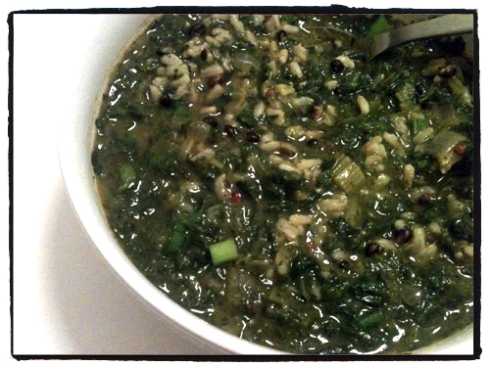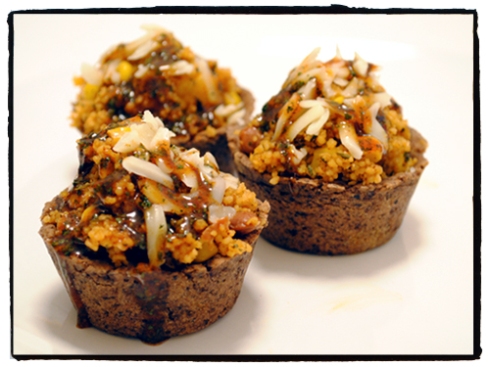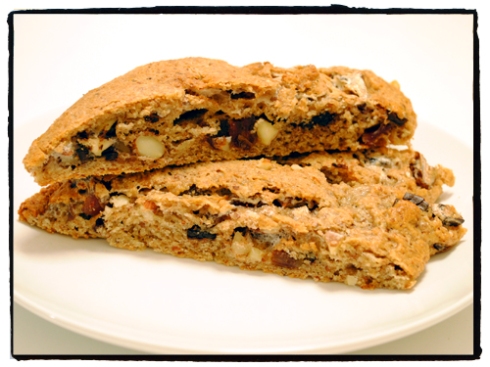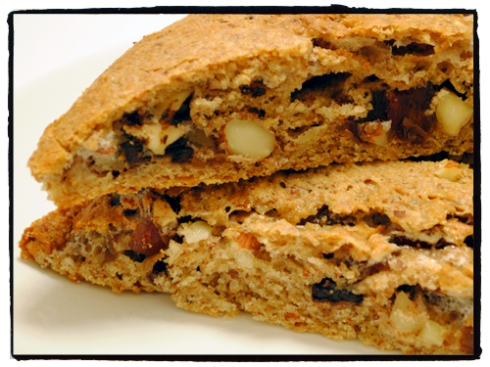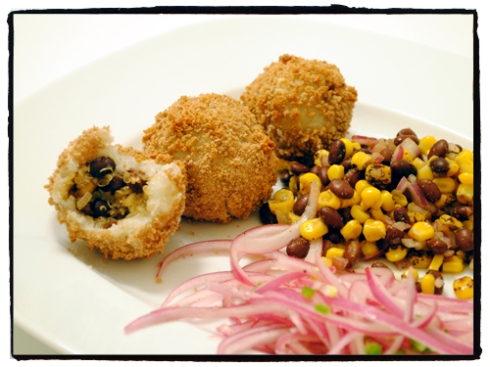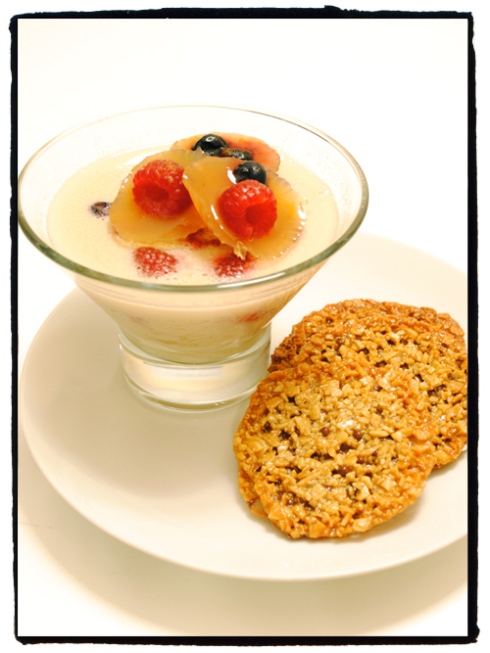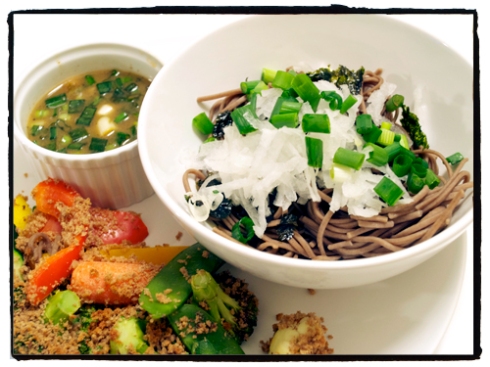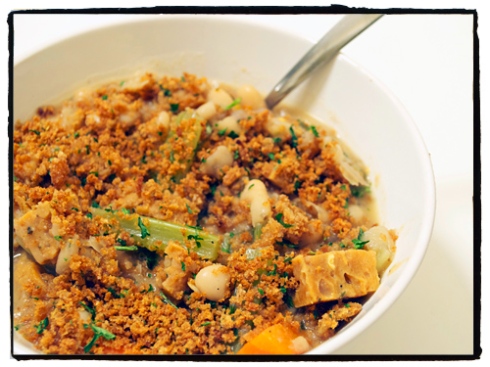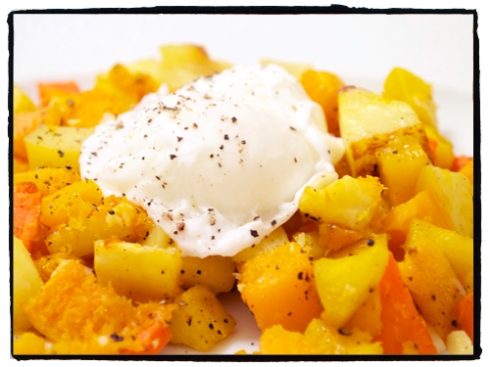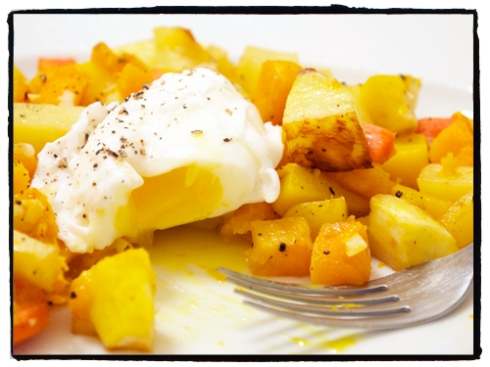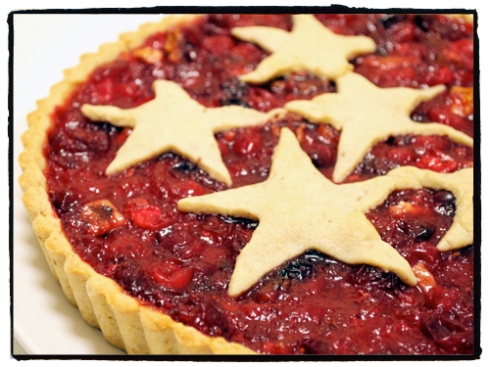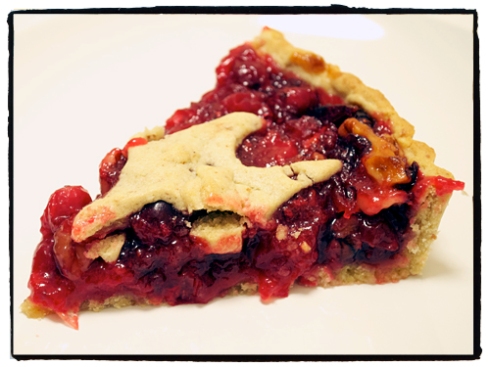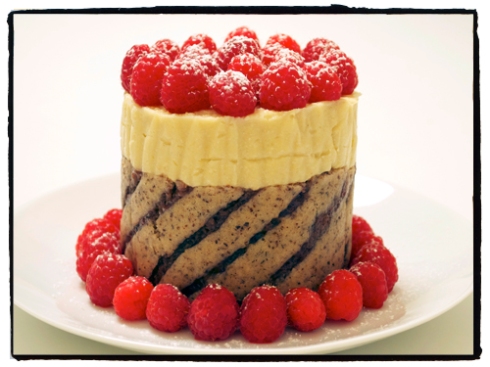
The January 2011 Daring Bakers’ challenge was hosted by Astheroshe of the blog accro. She chose to challenge everyone to make a Biscuit Joconde Imprime to wrap around an Entremets dessert.
For this month’s challenge we were challenged to make a biscuit joconde imprime that would be cut and fit into a dessert mold for a completed entremets. Are you totally lost? Because I know I was! So let’s go over some vocabulary:
A joconde imprime (French Baking term) is a decorative design baked into a light sponge cake providing an elegant finish to desserts/torts/entremets formed in ring molds. A joconde batter is used because it bakes into a moist, flexible cake. The cake batter may be tinted or marbleized for a further decorative effect.
This joconde requires attentive baking so that it remains flexible to easily conform to the molds. If under baked it will stick to the baking mat. If over baked it will dry out and crack. Once cooled, the sponge may be cut into strips to line any shape ring mold.
Entremets (French baking term) is an ornate dessert with many different layers of cake and pastry creams in a mold, usually served cold.
For this challenge the joconde imprime would be the outside cake wrapper of the completed entremets dessert.
Once I got my brain wrapped around the vocabulary, I went into full-on panic mode. I was still recovering from a holiday baking overload, and this challenge was looking pretty out of my league. I seriously almost threw in the towel before I even began. I just didn’t think I had it in in me, but I didn’t really want to start off the new year skipping out on a challenge, so I let it sit for a few days and then reread the challenge. The more I went over the steps (and after watching a few videos of the process) it slowly started to look a bit less daunting.
I began scouring the internet looking for entremets that featured a decorated joconde sponge. For this challenge we were to decorate the joconde sponge using a provided décor paste recipe. I had my heart sent on a vegan version of this challenge and got really hung up on the fact that the décor paste recipe included so many egg whites. I really had no idea how to sub for the egg whites, and I was having no luck finding an already existing veganized décor paste recipe. Then I stumbled upon an image of a joconde sponge decorated with preserves. I got super excited and decided that even though it wasn’t sticking to the original challenge recipe it would still result in a decorated joconde, and I would be ok with that. I decided on raspberry preserves and bouncing off of that decided to go with a raspberry/lemon cheesecake type entremets. There were a number of vegan joconde recipes on the internet thanks to when the Daring Bakers took on Opera Cakes.
From what I could find, in order to decorate the sponge with preserves one would just pipe the preserves into a pattern on top of the sponge batter and then bake. Simple enough. Only problem was that while the sponge was baking the preserves started to sink into the batter, resulting in less than clean lines. I really did love the flavor of the preserves in the sponge, so I am curious if anyone out there knows of a better way to decorate sponge in this manner. It is definitely something I would like to master.
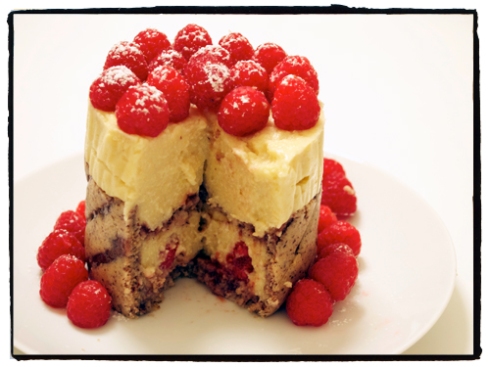
To assemble the entremets I had to build a make-shift mold out of a cardboard cereal box. It actually worked surprisingly well, although I lined the inside with parchment paper and the moisture from the entremets filling made it get all wrinkly (can you tell I really wanted some pristine lines and smooth edges for this thing?). For the base I used leftover joconde sponge and layered that with some more raspberry preserves. I topped the preserves with a layer of the lemon filling along with some fresh raspberries. Then threw in another layer of joconde sponge with preserves and the rest of filling. Topped it all off with some fresh raspberries and powdered sugar and voila – a super impressive looking dessert!
Despite it’s less than perfect appearance, I did really love this dessert. And in the end, it was not all that hard to put together. In fact, because I had leftover filling, and I was feeling guilty about not veganizing the décor paste, I made another quick one the next day!
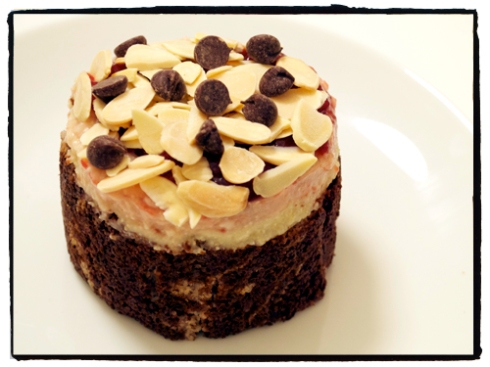
I had read someone mention decorating the joconde sponge by tinting a portion of the joconde batter and piping that onto the bottom of their baking pan and freezing. They then poured the un-tinted batter over the frozen tinted batter and placed the pan back in the freezer before baking. I tried this approach by tinting my batter with cocoa powder, and it actually seemed to work. I did two different designs and unfortunately totally broke the joconde with the cool pattern on it. Thus, I was left with my failed homemade pastry comb attempt, which really didn’t have much of a pattern.
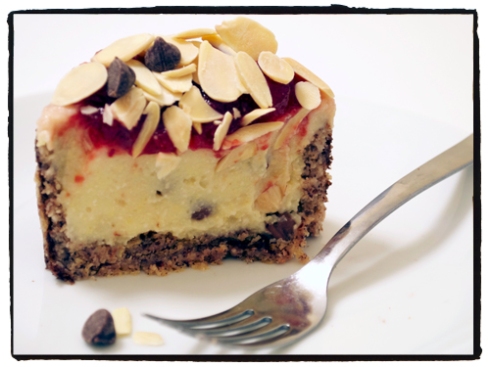
Since I used cocoa for the joconde I decided to add a few tablespoons of chocolate chips to about 3/4 of the leftover lemon filling and then added some raspberry preserves to the leftover 1/4 of the filling. I layered those in the mold and then topped with more preserves, some toasted almonds, and chocolate chips.
And just to show you the other sponge that broke:
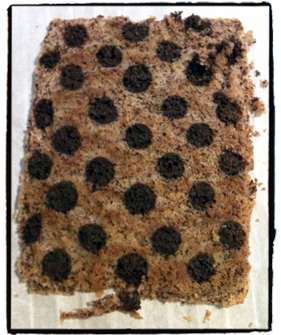
You can view the recipes and how to assemble the dessert after the jump. Please bear in mind that a lot of this was experimentation and could certainly use more tinkering to get the decorated joconde just right.
Read the rest of this entry »
